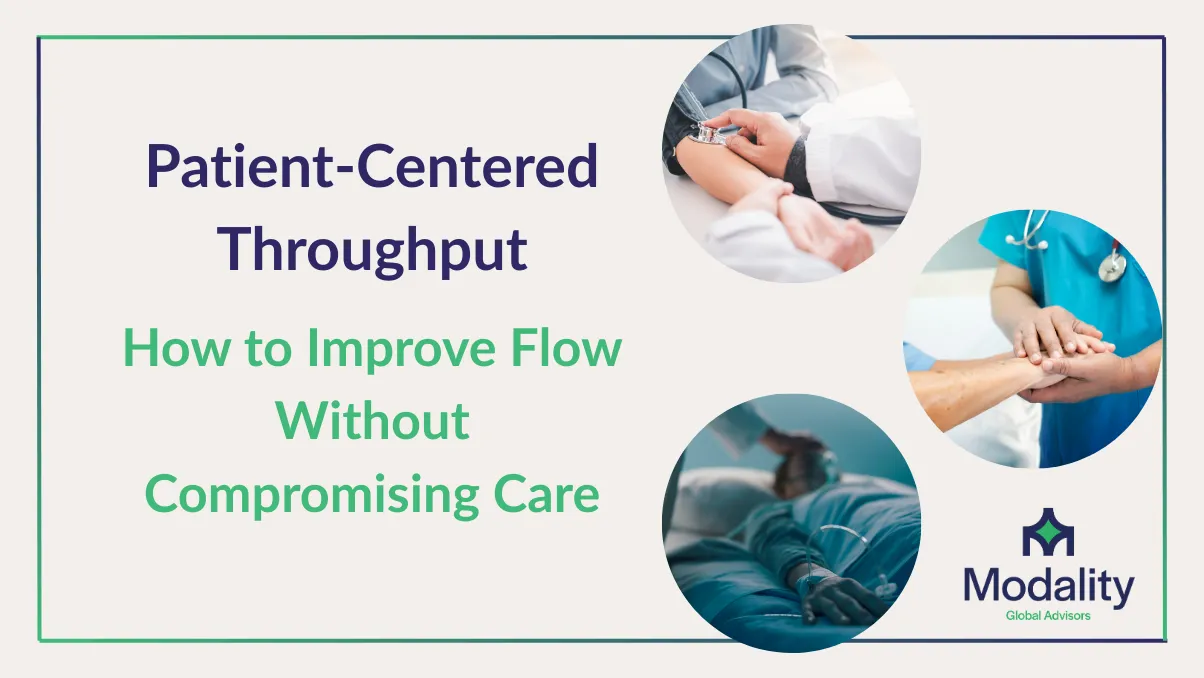In today’s healthcare environment, the push for efficiency must never come at the expense of quality, especially in perioperative care for high-acuity specialties like cardiology and oncology. As patient volumes rise and urgency grows, hospitals face increasing pressure to reduce wait times and length of stay while upholding exceptional care standards. Meeting this challenge requires more than packed OR schedules; it calls for a patient-centered throughput strategy that blends clinical excellence with operational precision.
The Core Challenge: Balancing Speed and Quality
Perioperative services, including preoperative, intraoperative, and postoperative care, are critical junctures in patient flow but often become major bottlenecks. This is especially true for cardiac and cancer patients, where timely intervention can mean the difference between recovery and serious complications. Delays in areas like pre-operative clearance or a congested PACU (Post-Anesthesia Care Unit) can trigger a domino effect of postponed procedures, extended hospital stays, and elevated clinical risk.
Yet, accelerating turnover without strategic coordination can jeopardize patient safety, increase staff burnout, and lead to costly errors. Balancing speed with safety requires thoughtful, data-driven perioperative planning.
So, how can hospitals streamline patient flow without becoming assembly lines?
Redesigning Flow with the Patient at the Center
Surgical schedules are frequently built to maximize case volume, rather than tailor care to patient needs. A patient-centered throughput model shifts the focus, structuring workflows around each individual’s risk level, clinical condition, and expected recovery path.
Key strategies include:
- Risk-Based Preoperative Pathways: Prioritize evaluations based on patient complexity and comorbidities, not just appointment order.
- Pre-Surgical Education and Optimization: Engage patients early with education and health optimization to enhance surgical readiness and post-op outcomes.
- Coordinated Scheduling: Streamline diagnostics and specialist visits by aligning labs, imaging, and consults to minimize delays and redundant appointments.
Cutting Down on Wait Times Without Expediting Care
Without rushing through clinical care, high-performing surgical services remove "dead space" from workflows. Hospitals can more accurately predict case demand and allocate resources appropriately with the use of AI-powered forecasting and predictive analytics. For instance:
- By preventing late-day overruns, dynamic block scheduling makes sure that complicated cardiac procedures aren't crammed in between easier cases.
- For cancer patients who require time-sensitive resections, OR capacity mapping helps prevent bottlenecks and needless delays.
Reducing Length of Stay Without Compromising Safety
For cardiac and oncology patients, shorter hospital stays are possible and beneficial when supported by structured recovery plans, proactive discharge coordination, and early intervention measures. The goal isn’t to discharge patients prematurely but to ensure they transition home at the optimal time, with the necessary resources in place. Key Strategies for Safe & Efficient Discharge:
- Enhanced Recovery After Surgery (ERAS) Programs: Evidence-based protocols that minimize variability and accelerate healing.
- Collaborative Discharge Planning: Daily multidisciplinary rounds involving physicians, nurses, and case managers to align on discharge readiness.
- Post-Discharge Remote Monitoring: Wearables or telehealth check-ins to catch complications early and prevent readmissions.
How Modality Global Advisors Drives Real-World Impact
At Modality Global Advisors (MGA), we don’t just offer frameworks, we collaborate directly with perioperative leaders to build customized, data-backed solutions that enhance efficiency without compromising care.
Streamlining the Surgical Journey
We take a holistic view of the perioperative process—from scheduling to discharge—mapping each touchpoint to uncover delays, redundancies, and safety gaps. Together with your teams, we design integrated care pathways that reflect both clinical priorities and operational realities.
Smarter Planning with Predictive Analytics
Leveraging real-time data, we equip health systems to forecast demand and allocate resources more strategically. Whether it’s staffing, OR availability, or recovery room utilization, our tools help shift operations from reactive to proactive, while protecting clinician well-being.
Optimizing High-Acuity Service Lines
From cardiac catheterization labs to oncology surgical suites, we refine case mix and scheduling to balance efficiency, safety, and financial performance. The goal: boost throughput and margin, without compromising patient outcomes.
Building a Culture of Accountability and Leadership
Transformation succeeds when frontline teams are engaged. Our clinical governance and change leadership model fosters shared ownership, promotes transparency, and secures long-term buy-in across departments.
The Future: Efficient Care Without Compromise
Enhancing perioperative throughput requires rethinking systems for sustainability, speed, and safety rather than hurrying care. Performance and happiness naturally increase when workflows are created with patients in mind and backed by empowered clinicians.
At MGA, we believe that high-efficiency care can also be high-empathy care. Let’s work together to reimagine your surgical services for the future.
Contact Us
Register for Upcoming Webinars

